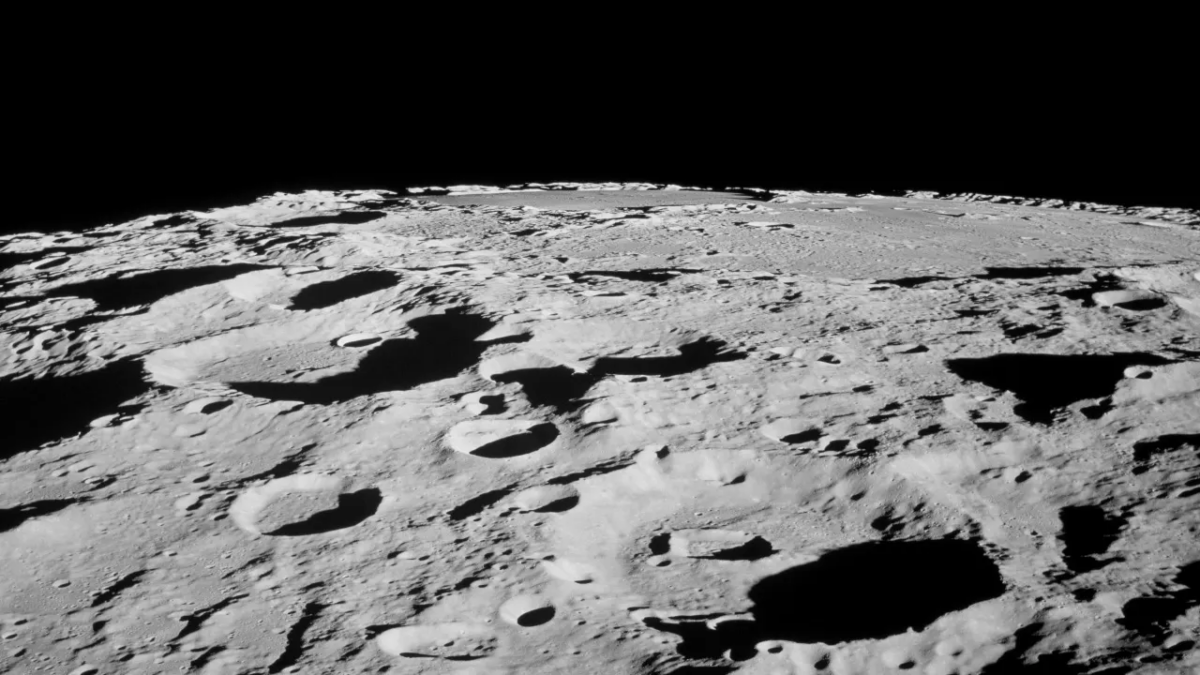Numerous tiny impacts that vaporize lunar soil and throw atoms into the air largely create the moon's thin, transient atmosphere, a new study finds.

Credit: NASA
Unlike the layer of air that supports life on Earth, the Moon has only a thin layer of atmosphere. Now, a new study using samples recovered by the Apollo missions more than 50 years ago is helping researchers gain clues about how our moon's thin atmosphere formed and has evolved over billions of years.
“The lunar atmosphere is extremely thin and very different from Earth’s atmosphere. It’s essentially a loose collection of atoms, so tenuous that they rarely collide with each other,” says Nicole Nie, a planetary scientist at MIT and lead author of a paper published today in Scientific advancesobserving how the lunar atmosphere is generated through a process called space weathering.
Comparison of isotopes
Space weathering is a general term that covers several processes, such as interactions with the solar wind or the vaporization of meteorites after impact. For example, when micrometeorites, such as dust particles, strike the surface of the Moon, they vaporize and kick up atoms that contribute to the atmosphere.
But it's hard to determine how much a particular type of weathering contributes just by looking at the Moon's barely present atmosphere. However, it turns out that two elements in particular, potassium and rubidium, are particularly sensitive to the different types of weathering that could affect them.
The study, however, is not focused on the atmosphere itself, but on the chemical composition of samples of lunar soil brought back by astronauts. The team took lunar dust and applied an acid to refine the potassium and rubidium. These were then superheated with a plasma and the resulting gas was examined to determine the elements and isotopes present. (Isotopes are essentially different “versions” of the elements, with the same number of protons but different numbers of neutrons in the nucleus.)
The team observed that heavier isotopes were the most dominant, indicating a significant contribution to the Moon's atmosphere from micrometeorite vaporization. In fact, about 70 percent of the potassium in the Moon's atmosphere appears to come from micrometeoroids, compared with about 30 percent from the solar wind, according to Nie.
Transient air
When micrometeoroids strike the lunar surface, they heat up and vaporize into atoms. Some of those atoms float above the lunar surface, creating its tenuous atmosphere. But because the Moon's gravity is low, some atoms end up escaping into space, while others fall back to Earth.
“The lunar atmosphere is therefore a transient environment, made up of atoms that temporarily remain on the lunar surface, rather than forming a stable atmosphere like Earth’s,” Nie said.
In this way, the analysis of potassium and rubidium in lunar soil samples could shed light on the lunar atmosphere. By modelling how different space erosion processes produce different isotopes of these elements, the team was able to extrapolate what the atmosphere looked like, based on the atoms that returned to the surface.
Nie’s study examined 10 samples from five landing sites. Future missions could obtain more samples from a wider range of terrain to better understand the atmosphere, in addition to the benefit of making in-situ measurements. In 2013, the Lunar Atmosphere and Dust Environment Explorer arrived at the Moon for a several-month mission in part to study the ephemeral atmosphere, but there has been little follow-up on the topic since.
Although this study focused solely on potassium and rubidium, Nie and his colleagues hope to explore isotopes of other elements to better understand the mechanisms at play. “Different isotopic systems offer unique insights into various aspects of space weathering processes, and expanding our analysis to include them will provide a more complete understanding,” he says.